PrAACtically Reading with Karen Natoci: Hello Baby
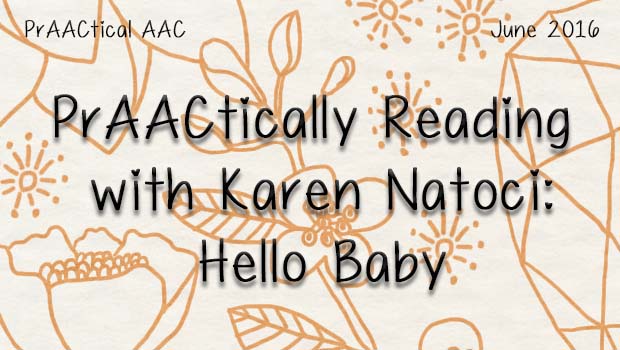
Karen Natoci is back with some wonderful suggestions for reading and building AAC skills with young children. Although her focus is on little ones with visual impairment, these books and the implementation suggestions, would be useful for a wide range babies, toddlers, and preschoolers who are developing their language skills. Enjoy!
::::::::::::::::::::::::::::::::::::::::::::::

Books
Hello Baby Words (high contrast board books) by Roger Priddy, illustrated by Holly Jackman (Published by St. Martin’s Press, 175 Fifth Avenue, NY 10010)
- Hello Baby Words: On The Go
- Hello Baby Words: Faces
- Hello Baby: Animals
- Hello Baby: Faces
Core Vocabulary Focus: GO, GET, WHO, THAT, SEE, IT
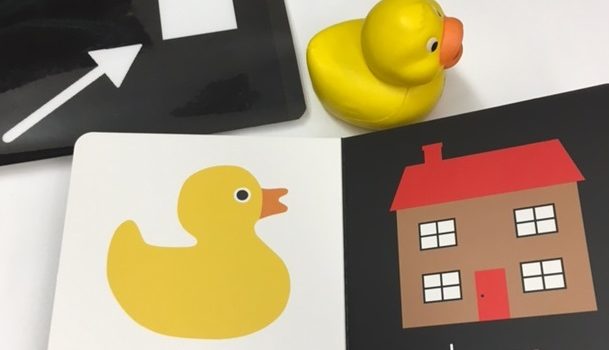
Fringe Vocabulary
Transportation: digger, balloon, train, roller skates, helicopter, truck, car, submarine, rocket, dump truck, fire truck, boat, race car, tractor, car carrier, plane
Animals: cat, turtle, fish, pig, butterfly, cow, mouse, bird, bear, zebra, rabbit, panda, penguin, dog, sheep, snake
Faces: boy, girl, woman, man, grandfather, grandmother
Feelings: sad, happy, awake, asleep
Description: short hair, long hair, straight hair, curly hair
Accessories: hat, glasses
Things: apple, teddy bear, boots, tree, duck, house, car, sun, strawberry, socks, ball, train, blocks, t-shirt

COMMUNICATION Matrix (Rowland, 2009) Level: I-V (concrete symbols)
RECEPTIVE: Connect a key core word + text to repeat the core word with rotating fringe words. Receptively you are providing 2 word sentences augmented with picture and/or object supports to maximize understanding.
CVI Range: 1-8, Phase I, II, III.
Materials: black background (a dull black postboard works), lightbox (to place any matching objects that go with the pages in the book)
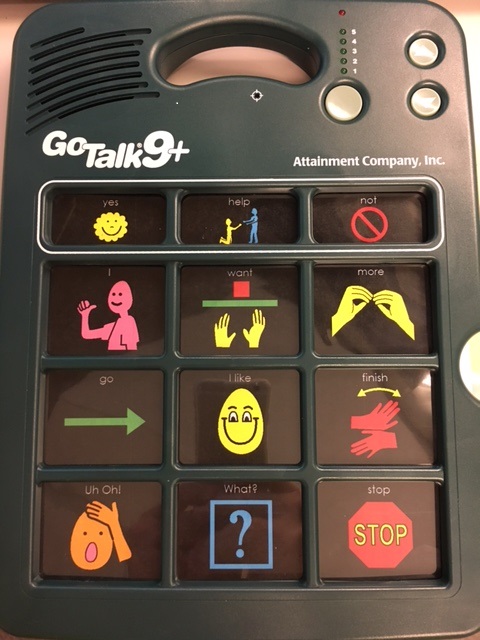
—————————————————————————————–
Summertime reading is here! I found these wonderful high contrast books at Powell’s Books in Portland, one rainy afternoon. I loved the bright colors and the clean lines. I thought that these might be nice books to read to children with complex needs. The two needs I am hoping to address are: (1) need for high contrast, iconic shapes that pop out (Cortical Vision Impairment) and (2) need to hear a core word + fringe words in a repetitive manner. The ultimate goal is two-fold: learn new words, hear two word sentences emphasizing a potentially powerful core vocabulary word, and (3) promote engagement with manipulatives or personal experiences.
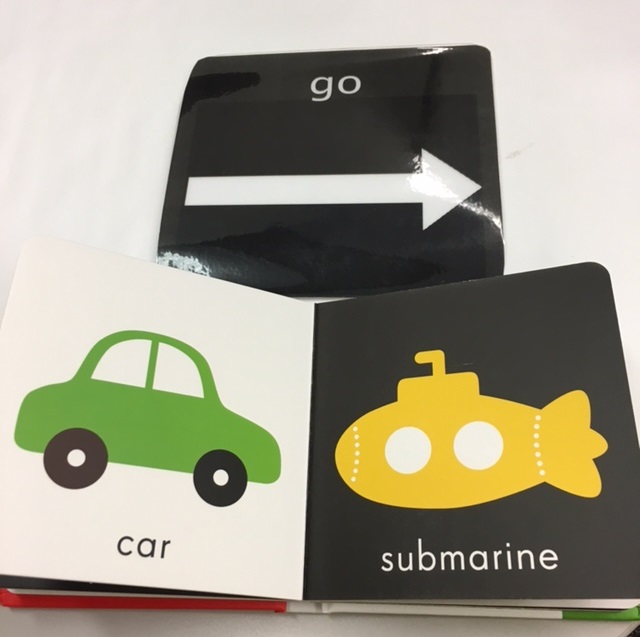
Since this shared reading activity is geared for those with high vision needs, I preferred to read to a very small group (maybe 2-3 students) but better yet one on one. I’ve attached a simple video example. There are so many ways to enjoy these books!
Some ideas:
- Use a sequencer and have the child read each page.
- Have two students read each page where the first child uses their AAC system to say the core word and the other child uses their AAC system to say the fringe word.
- Each child reads a page as you involve everyone in the group.
- After reading the story, the teacher writes the short sentences on the shared writing sheet in large print. Everyone can look at the text together and locate the word, “GO” for example.
- The teacher highlights “Go” using red ink in a way that highlights the shape of the word,
- Students practice putting sentences together when all of the sentences are cut up into only words.
- A personal story can be written using all things that “go” in the child’s life (family car, wheelchair, ball) with personal photos printed and clarified for maximal vision potential.
- These stories, though visually simple, offer opportunities for students to navigate their devices for the fringe vocabulary. The instructors can offer support as needed.
- Some students may enjoy real manipulatives. It is easy to find the animals and find life size examples that go with most of the pages.
- Students can use eye gaze, touch or tap the page that they want to hear in a child led reading exchange.
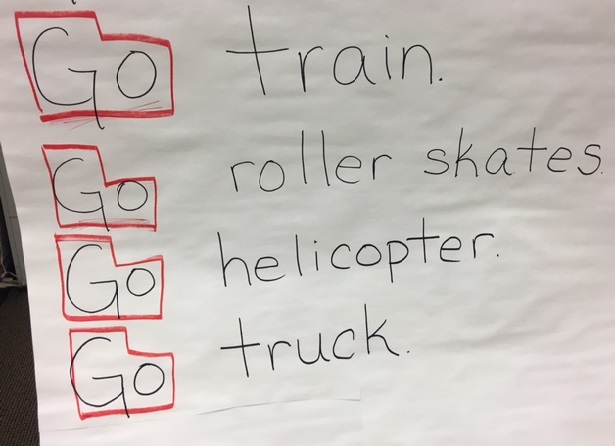

Additional notes about these books and CVI:
- Children with CVI may have strong color preferences. Most of the images in these books are of objects depicted in no more than two colors against a black or white background. It is rare to see books published and available that offer visual images that closely align with the needs of children with CVI.
- It is important to consider NOT laminating the core words that will be used during this reading. The laminating is highly reflective and distracting to those with CVI. The reflection itself may become the most salient feature of the core word rather than laminated message of intent.
- A student in the range 1-2 (phase I) may prefer the objects (against the black background) and you’ll notice more attention to something three dimensional, rather than the two dimensional book,
- Visual latency may be present. Show the page of the book to the child and give them plenty of time to look, look away, look again, and gaze as they will. You should stay still and not move the book around too much. Children with CVI will often move their heads and angle to adjust their visual perspective. It is difficult to do this with a moving target.
- Most of the pictures are targeted at the CVI Range 7-8 where a child is visually attending to two or three colors. These board books can also be further modified to present only one image at a time (that is, if you want to separate the pages altogether.)
Reference: Cortical Visual Impairment: An Approach to Assessment and Intervention by Christine Roman-Lantzy, 2008 reprint, American Foundation for the Blind (AFB Press), 11 Penn Plaza, Suite 300, New York, NY 10001
Filed under: Featured Posts, PrAACtical Thinking
Tagged With: Books, literacy, reading, visual impairment
This post was written by Carole Zangari


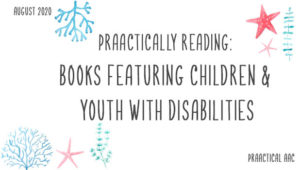

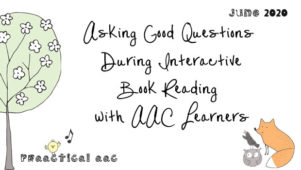
1 Comment
Love this!! I’m excited to share. I like that you’ve given some very specific instruction in how to implement. Thanks so much!